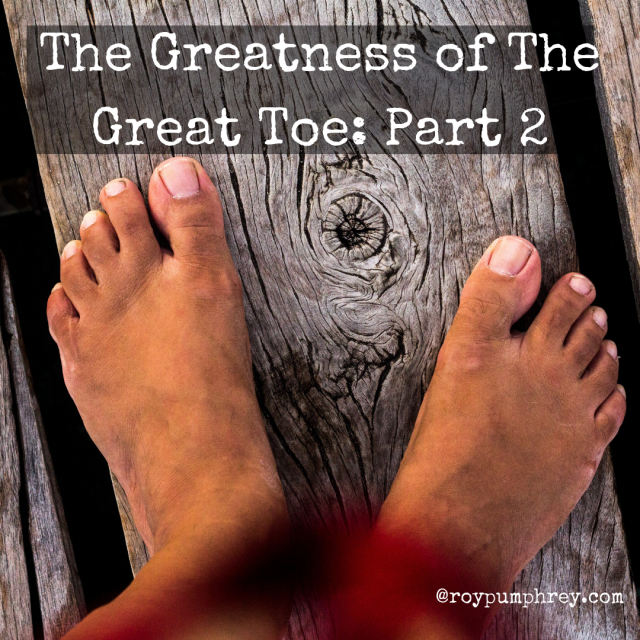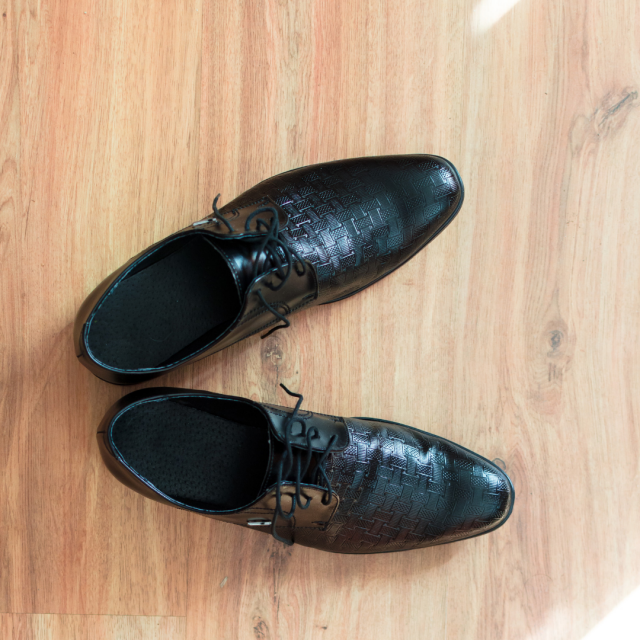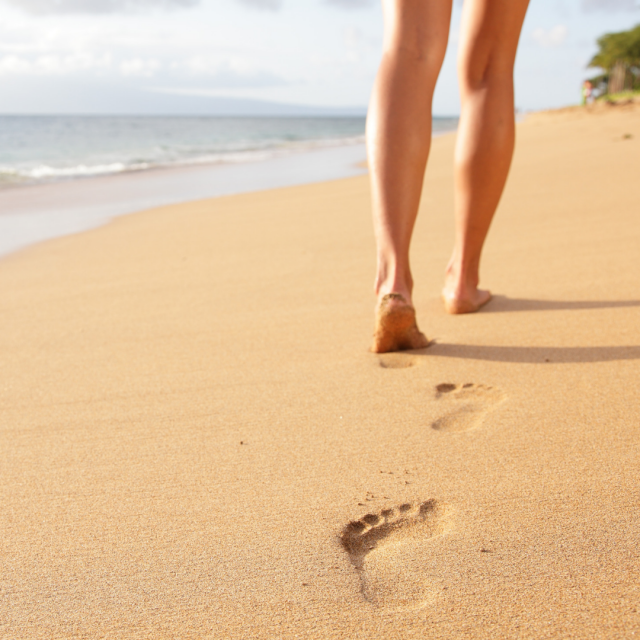
The Great Toe Needs to Be Great
It wants to be great.
You just have to let it be.
Your Big Toe needs to move. <—-as we learned in Part one, which you can read by clicking the link The Greatness of the Great Toe
Specifically the 1st metatarsophalangeal joint (MTP), where the big toe articulates with the foot, needs to be mobile and strong.
If the Big Toe isn’t functioning as it should your balance wont be very good because you can’t make microadjustments to the natural sway of the body at the foot.
Your walking gait will be off due to the inability to dorsiflex the hallux and take full advantage of the Windlass Mechanism.
Plus, you’ll be at a greater risk of developing or worsening Valgus Hallux AKA, your bunions.
Never Think about Training the Feet
Instead we detrain them by spending too much time with the feet casted in shoes.
Over time shoes tend t create a narrowing/ crowding of the forefoot due to narrow toe boxes and a dropping/ flattening of the arch do to arch support.
But I Need Arch Support!
Yes, you probably do.
But did you when you were a kid?
Most adults “need” arch support because of a lifetime in shoes.
And crappy, hang off the joints, posture that contributes to things like Acquired Flat Feet.
Yes, AQUIRED, as in, YOU developed it.
If The Shoe Provides The Support, What Do You Need Muscles In Your Feet For?
Ever broken a bone?
Been in a cast?
Did the muscles atrophy?
Since shoes do the work of the muscles, supporting the foot, the feet become weak (atrophy) and immobile over time.
Just like any other muscles at any other joint.
Regain Foot Function:
Before we get into this:
DO NOT GO COLD TURKEY.
Don’t go buy the finger toe shoes and start running barefoot.
You’ll end up JACKED UP in no time.
“Running in minimalist shoes has previously been shown to reduce stride length1 and the amount of ankle dorsiflexion at initial ground contact,6 with the latter promoting a FF pattern.47 Changing to a FF pattern increases ankle joint contact forces and plantar-flexor muscle forces.13 Increased involvement of the ankle plantar-flexor muscle could result in greater elastic energy storage and recovery in the Achilles’ tendon, which may contribute to improved running economy and performance.439 We hypothesise that the increased loading on these structures may contribute to greater adaptation with resultant greater increases in performance in response to training.7 However, these unaccustomed high forces could also increase risk of injury until sufficient adaptation has occurred in muscular and articular tissue.5101113 Previous research has observed changes in muscle and bone tissue when transitioning to minimalist shoes over 10–12 weeks, “- The long-term effect of minimalist shoes on running performance and injury: design of a randomised controlled trial
That’s too much too soon.
The joints, muscles, ligaments and tendons are not ready for that yet.
Baby Steps, it’s a long game.
Get Yo Feet Right:
#1: Limit Your Time in Fancy Dan Shoes
High heels and narrow toe box shoes may look nice, but they are not your friends. #frenemies

Look, wearing these types of shoes every now and then are probably not going to have a negative consequence on your feet.
It’s just not enough stress applied to the system.
Remember, Wolffs Law and the SAID principle.
Your Tissues Adapt to the Forces Placed Upon Them.
Like most things in life, it’s the dose, not the thing.
However, if you’re spending 8-10 hours a day in these shoes, 5 days a week for years?
That’s a BIG dose and cutting back would be a really good thing for your feet.
How much is the right amount?
I have NO IDEA.
But I’m guessing as little time in Fancy Dan shoes as possible is best.
#2 More Time Barefoot, Especially in Sand if Possible
 Get out of shoes all together more often if you can.
Get out of shoes all together more often if you can.
Not all the time, but can you walk around your house without shoes on?
Couldn’t hurt.
I’d have to imagine that the less time you spend “casted” in shoes the better.
That is unless your feet are really bound up, club like, immobile, and your Hallux (bunion) is extremely valgus.
In that case, I would focus on foot and toe exercises until you’ve regained some foot mobility and strength.
Otherwise walking around on a club foot will probably only make things worse due to the excessive pronation increasing the Hallux angle.
Sand?
Sprinting in Sand to Increase Sprinting or Cutting Speed?
Terrible idea.
Yes, its “hard” and will make you tired.
Just not faster.
Sprinting in sand also increases the amortization phase, decreases the contribution of the stretch shortening cycle, and leads to a more “muscled” less “springy” stride.
Walking or Jogging in Sand to Increase Foot Mobility?
Great idea.
The sand will force your foot to move, stretch and conform to the shifting sand.
Walking or jogging in sand is literally multiple joint mobilizations with each step.
Toe Spreaders:
You watch TV and sit in front of a computer.
Probably for a few (to many) hours a day.
Toe spreaders are an easy way to passively realign your toes (MTP) angles.
While the toe spreaders are not activating foot muscles to pull the toe joints back into a more neutral position, they are, at least, passively stretching the foot out and realigning the toe joints.
And, if nothing else, being in toe spreaders decreases the amount of time your feet are in a “bound up” position.
I wouldn’t wear toe spreaders all the time.
I’m guessing that’s not a great idea either.
But an hour or two a day to kinda stretch things out?
I’m thinking that would be a good thing.
Weight Train in Minimalist Shoes or Barefoot:
But this only works IF you’re cognizant of your feet.
Minimalist shoes and barefoot training wont fix anything if you put them on and don’t actively try to spread the toes, press the big toe into the ground, activate your arch and grip the ground.
Toe/ Foot Exercises:
One of the reasons the arch drops is because the muscles of the foot are no longer creating and maintaining foot structure.
To do so the muscles have to be mobile, active, strong.
They need to be trained.
Toe Spreads:
Towel Crunches:
Short Foot/ Rooting/ Gripping the Floor:
Big Toe Adduction:
Great Toe Press/ Raise:
Manual Foot Mobilizations:
Don’t Throw Your Shoes and Orthotics out Yet
Look, if slipping orthotics in your shoes for the second half of 12 hour shift keeps your feet from killing you….
DO THAT, USE THE ORTHOTICS
If you find doing your short runs in minimalist shoes is fine, but contoured and padded “running” shoes work better for the longer ones.
Use the DAMN RUNNING SHOES.
Stay out of Pain
If your feet hurt, what are the chances of you doing any of these exercises with regularity?
Slim to none, right?
Keep in mind…
Your feet didn’t become clubs overnight.
Its going to take A LOOOONNNGGGG time to get this ship right.
Hell, your feet may never be perfect.
You’re Gonna be Here in a Year Right? 5 years? 10?
So yeah, you got the time.



How many reps/sets of each foot exercise you think is a good start?
As much as you can do correctly. What most people find is that their toes/ feet are INCREDIBLY weak and after just a few reps they’re done. If that’s all you have, that’s all you have.
The most important thing is going to be the overall volume over the long haul. In fact I would argue that many small exposures is more valuable than one large exposure.
ie. 5 reps 5 times a day is more beneficial than 25 reps at once.